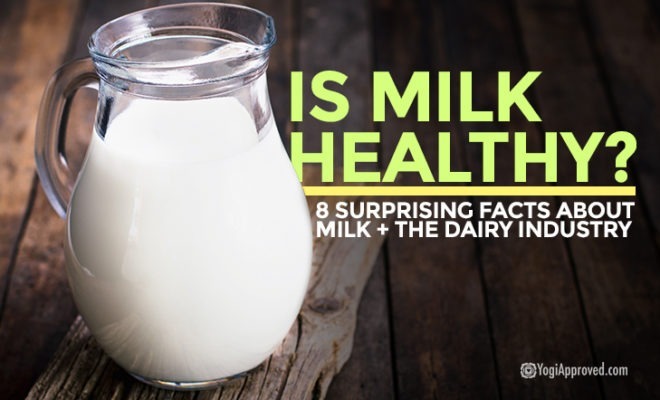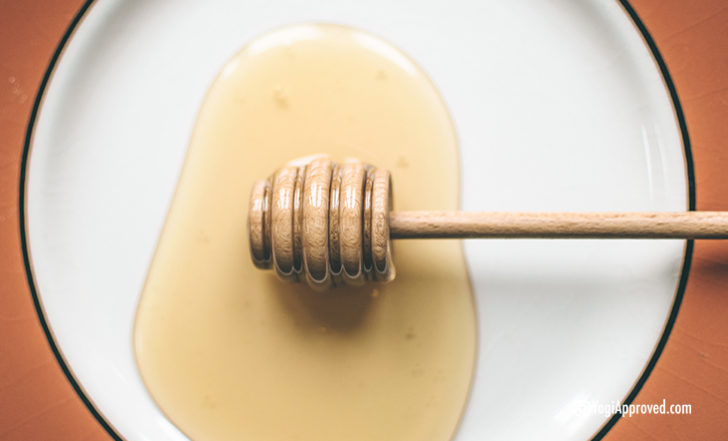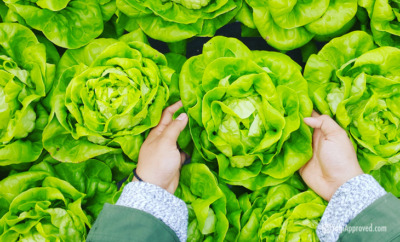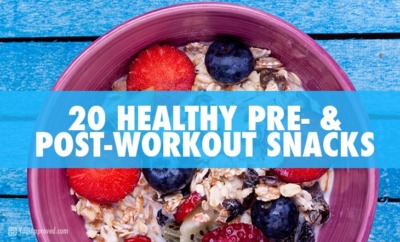Organic vs Natural vs GMO Foods and What You Need to Know About Each

organic vs gmo vs natural
When you go shopping for food, the golden rule is if you can’t pronounce it, it’s probably not good for you. Processed food is toxic to your body short – and long-term. “Low fat” just means added sugar, and sugar is toxic. Any vague/generic term, such as “natural flavor” usually indicates it’s a chemical or preservative.
Yuck.
Natural flavors and artificial flavors often contain the same chemicals, are simply produced/manufactured differently, and ultimately both are bad for you. Processed foods are stripped of their nutrients and thereby stripped of their nature-made flavor, which is why “natural” and artificial flavors then have to be added.
But since these are added after the fact, these flavors are not necessarily derived from the food product and instead are more often than not derived from animal byproducts (insult to injury for vegetarians!!) and/or nasty chemicals.
Also, if you see the word dextrose (or anything made with corn) or soy on your nutritional label, then you automatically know it’s GMO, unless otherwise stated.
If you have stepped into a supermarket anytime in the past five years, you have come across signs for natural, GMO-free and organic foods.
While you may look at those signs and instantly think that those identifiers mean those options are healthier than other choices, did you also know that there is a huge difference between the three labels?
Let’s start with a breakdown of what natural, GMO and organic foods really mean:
It’s important to educate yourself on what each term actually means. From there, you can make an informed decision on what’s best for you, your family, and your lifestyle.
Natural
This is essentially a marketing gimmick to con people into believing that what they are eating is healthy or nutritious. After all, corn is a natural source, but the label does not say if the corn source is from an organic or GMO-free source or if other chemicals were used throughout the growing season.
There are a lot of ingredients out there that come from natural sources that you do not want to put in your body. Don’t fall for this marketing ploy.
GMO
GMOs are genetically modified organisms that contain lab-created genes to give them new characteristics, such an increased size, resistance to pests, or a more appealing aesthetic. GMO crops are then processed into other ingredients that make their way into your foods, oils, and even baby formula!
In fact, more than 80% of processed foods contain GMOs. What that means is if the food you are eating does not say GMO-free or organic, it is most likely from a genetically modified source. Also note that there’s a difference between genetically modified and genetically engineered.
There is a lot of debate swirling around about whether GMO foods are potentially harmful or harmless. That’s why it’s important to conduct your own research and decide whether you feel comfortable eating genetically modified foods.
Organic
A really easy way to know you’re getting all quality, healthy ingredients is buying foods with organic labels. Organic foods are free of harmful chemicals, including GMOs, synthetic pesticides, herbicides, neurotoxins, sewage sludge, growth-promoting antibiotics and drug residues.
With that said, here are 8 reasons why I choose to eat organic food:
Again, it’s important to conduct your own research to arrive at an informed decision. After conducting my own research, I’ve chosen to stick to organic food. Here are my reasons for choosing organic.
1. It’s More Nutritious
Organic foods are grown in nutrient-dense soil that is sustainably managed. The resulting foods are more nutritious, with more vitamins and minerals, enzymes and other micronutrients. In fact, a study in the Journal of Alternative and Complementary Medicine found that organically-grown foods contain (on average) 21% more iron, 27% more vitamin C, 29% more magnesium and 14% more phosphorus.
2. It’s Better Tasting
We eat food to sustain life, but we choose certain foods due to personal preferences. When you eat organic foods, you will probably notice that they taste better due to the fact that they were grown in healthier soil with better growing conditions. Organic foods might not be as pretty as their conventional counterparts, but you can taste the difference.
3. It’s Much Cleaner
Meat and animal byproducts (such as dairy) have high concentrations of pesticides and other chemicals. For instance, a chicken that eats GMO-filled feed or other animal byproducts is now contaminated with those chemicals.
If you eat an animal higher up on the food chain, such as a large fish, you are ingesting higher concentrations of toxins, antibiotics, drugs and growth hormones that they ingested from smaller food that are lower on the food chain. When you eat organic meat and animal byproducts, you are preventing yourself from ingesting these potentially hazardous chemicals.
4. It’s Free of Pesticides
Eating foods made with organic ingredients are the only way to ensure that you are not ingesting more than 600 chemicals used in agriculture in the U.S. The average person will consume more than 16 pounds of chemical pesticides each year (when eating non-organic foods), and the majority of those chemicals have not been tested by the FDA for long-term health effects on humans.
Some studies have found that exposure to pesticides can increase your risk of diabetes, among other health issues. Are you willing to take that gamble with your health?
5. It’s Free of Hormones
Inclusion of hormone supplements in the food industry is a huge deal. Animals are fed growth hormones to speed up their growth cycles to increase yields and cut costs. The problem with eating foods that were exposed to growth hormones is that when you ingest it, you are exposing your body to those same hormones.
This exposure can result in the growth of tumors, early onset of puberty, obesity and weight gain, genetic irregularities and even increased risks of cancer. Anything that directly messes with your hormones and genetic makeup is a big no-no.
6. It’s Free of Antibiotics
Modern food harvesting utilizes high doses of penicillin and other antibiotics to keep animals “healthy” and free of diseases. While this may sound like a great idea, what it is actually doing is increasing our exposure and resistance to antibiotics when we consume meat and animal byproducts. This unnecessary exposure is rendering many antibiotics ineffective when we are sick and need them most.
7. It Can Prevent Premature Aging
Another scary fact is that after animals are slaughtered, they are typically washed in chlorine baths (with more chlorine than a swimming pool) to sanitize them and prevent e-coli.
To cover up the chlorine smell, they are then injected with water and phosphate which, in humans, is known to weaken bones, encourage premature aging and increase your risk of kidney disease. No one can say that their piece of chicken is worth looking older and having weaker bones.
8. It’s Better for Our Environment
Our health aside, organically grown foods and animal products are better for our ecosystem. These practices are free of chemicals, pesticides, fertilizers and other contaminants that are polluting our earth and waterways.
Organic practices support farming and harvesting that is in harmony with our natural environment, and also ensure healthy, fertile soil and biodiversity. Clean, organic practices allow all vegetative and animal life to remain intact and maintain a peaceful, symbiotic relationship.
A Few More Important Details On Organic vs Natural and GMO
Shopping organic can be pricey, so here’s a quick list of the produce worth paying extra for organic: potatoes, apples, cherries, kale, spinach, bell peppers, blueberries, strawberries, peaches, celery, and grapes.
Other produce might not have as great of an impact by choosing conventional over organic. All meat should be purchased in organic varieties due to the high levels of hormones and chemicals during growth and development.
If you are interested in learning more about the food industry and farming practices, check out these movies: Fed Up, Forks Over Knives, Fat, Sick, and Nearly Dead along with the infamous book Fast Food Nation.
Just be warned – these resources might make you seriously rethink your food choices. They certainly did for me!
My final two cents?
Buying organic is not just a way to ensure the health of you and your family, but it is a way to let “big business” know that you are aren’t buying their pretty-looking, junk-filled, less-nutritious foods. Take a stand against poor farming and harvest practices and encourage a sustainable future for your children and grandchildren, and shop organic if you can.


This Month's Letter
From the Editor
Monthly motivation and food for
thought from our founder.


























